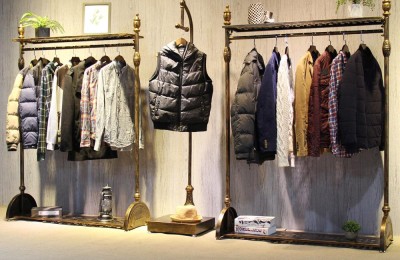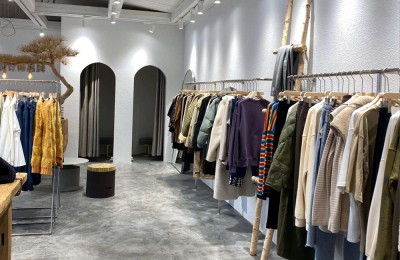At the beginning of the new year, the clothing industry did not get off to a good start.
Recently, the editor saw several eye-catching notifications in the subscription account:
Recently, Urban Beauty disclosed its 2019 performance forecast and estimated its full-year net profit in 2019. The loss will be no less than 980 million yuan, which shocked the market and the share price of Urban Beauty plummeted!
Regarding the reason for the huge performance loss, Urban Beauty stated in the announcement that due to the slowdown in market demand, Urban Beauty’s business Activities faced adversity, which significantly affected the consumer-facing apparel industry and the Group’s operating performance.
On the evening of December 31, Columbus, an outdoor sports brand that was as famous as Pathfinder in China, issued an announcement declaring bankruptcy.
It is reported that following Forever 21, New Look, and Gap, fast fashion brand Zara has also had an accident. Overnight, all ZARA stores in Wuhan were closed!
Although there is an important relationship between corporate failure and poor management, we can also Think of it, there is an “hidden rule” in the clothing industry: the least valuable thing in the clothing industry is inventory, but inventory pressure is a common problem in the entire clothing industry.
Clothing inventory is as high as 85.4 billion yuan, enough to digest for decades
In 2019, there were many closures of clothing companies, and the ones that attracted the most attention were the La Chapelle store closures and clothing clearance sales. Clothing companies encountered a bottleneck period in 2019, and inventory was one of the most important reasons.
Now that the Spring Festival is approaching, both clothing companies and small stores have begun to take stock. The editor recently was attracted by a video.
This is just the inventory of a clothing trading company, already So many, one can imagine how much inventory the entire clothing industry has. Since it was revealed that HM burns 120,000 tons and 28.4 billion in inventory every year, the “fig leaf” of the clothing industry has been torn off, and inventory has begun to attract attention. According to relevant statistics, my country’s clothing inventory reached 85.4 billion yuan in 2019! Isn’t this number amazing?
Insufficient domestic demand, clothing consumption index declines
In recent years, with the slow economic growth and changes in the consumption structure, residents’ consumption on clothing has begun to decrease. Weak terminal demand is also one of the reasons for the cooling of the apparel industry in 2019. Nowadays, those born in the 90s and 00s are the main consumers, but generally speaking, social wages are not high, but the pressure is great. When income is not high and other types of expenditures begin to account for a large proportion, clothing has become an item to reduce expenditures. one.
As can be seen from the table, from the second half of 2018 to the first half of 2019, residents’ purchasing power in the clothing category The consumption index has risen sharply, and market demand continues to expand. However, starting from the second half of 2019, the consumer price index of Chinese residents in the clothing category has dropped linearly. Although the data for December 2019 has not yet been released, looking at the overall situation, it will not be very high, and the high probability remains the same. It’s a downward trend.
The textile and apparel industry, which depends on the weather for food, is stymied by the warm winter
We have always said that the textile and clothing industry depends on the weather for food. A survey shows that the 10 years from 2010 to 2019 were the worst in history. In the hottest decade, 2019 will also be the second or third warmest year on record; at the same time, some experts predict that the probability of a cold winter this year is zero. This is undoubtedly a winter product for textile and clothing companies. “Punch hard.”
Some professionals revealed that even if the production of down jackets on the market is stopped, it will still last 20 years!
Then let’s take down jackets as an example. While the inventory of down jackets is high, data shows that the scale of my country’s down jackets is still on the rise. According to statistics from the China National Garment Association, the size of my country’s down jacket market in 2018 was approximately 106.8 billion yuan, an increase of more than 10% year-on-year. With consumption upgrading, the market size of China’s down jackets is expected to reach 138.2 billion yuan in 2020.
The weather is getting warmer and inventories are piling up but the scale continues to expand, which directly leads to down jacket fabrics also experiencing a decline this year. As for weaving and fabrics, which are the upstream of clothing, the market conditions in 2019 were also unsatisfactory.
In terms of fabrics,Take silk spinning and imitation memory as an example. As the most common fabrics for down jackets, sales have declined significantly in 2019, and profits and prices have shrunk significantly. For example, 75D weft-twist imitation memory was 2.8 yuan/meter at the beginning of the year, and is now quoted at 2.3 yuan/meter; 380T nylon Silk spinning dropped from 4.5 yuan/meter to 3.3 yuan/meter…
Mr. Chen, a trader who sells imitation memory, said: “This year’s imitation memory gray fabric has dropped by 0.7-0.8 yuan/meter compared to last year. , the profit is 20% less.”
In terms of weaving, weaving companies are in tears in 2019. Production and sales are difficult to balance, inventory is high, and funds are insufficient. Many companies cannot survive and have closed down. Now that the Spring Festival holiday is approaching, the market situation of weaving companies has recovered slightly. However, according to sample companies monitored by China Silk City Network, the current inventory of gray fabrics in Shengze has risen to about 38 days, which is still at a high level compared with the same period in previous years. After the start of the new year, when machines are restarted, if demand is still insufficient, weaving companies will only continue to accumulate inventory. Can the market digest such a large amount of inventory?
From raw materials to gray fabrics, from fabrics to clothing, they all come from the same origin and influence each other. Demand is still the most critical factor. 2019 “peeled off a layer of skin” for the entire industry chain. Can we hope that 2020 will be better? </p








